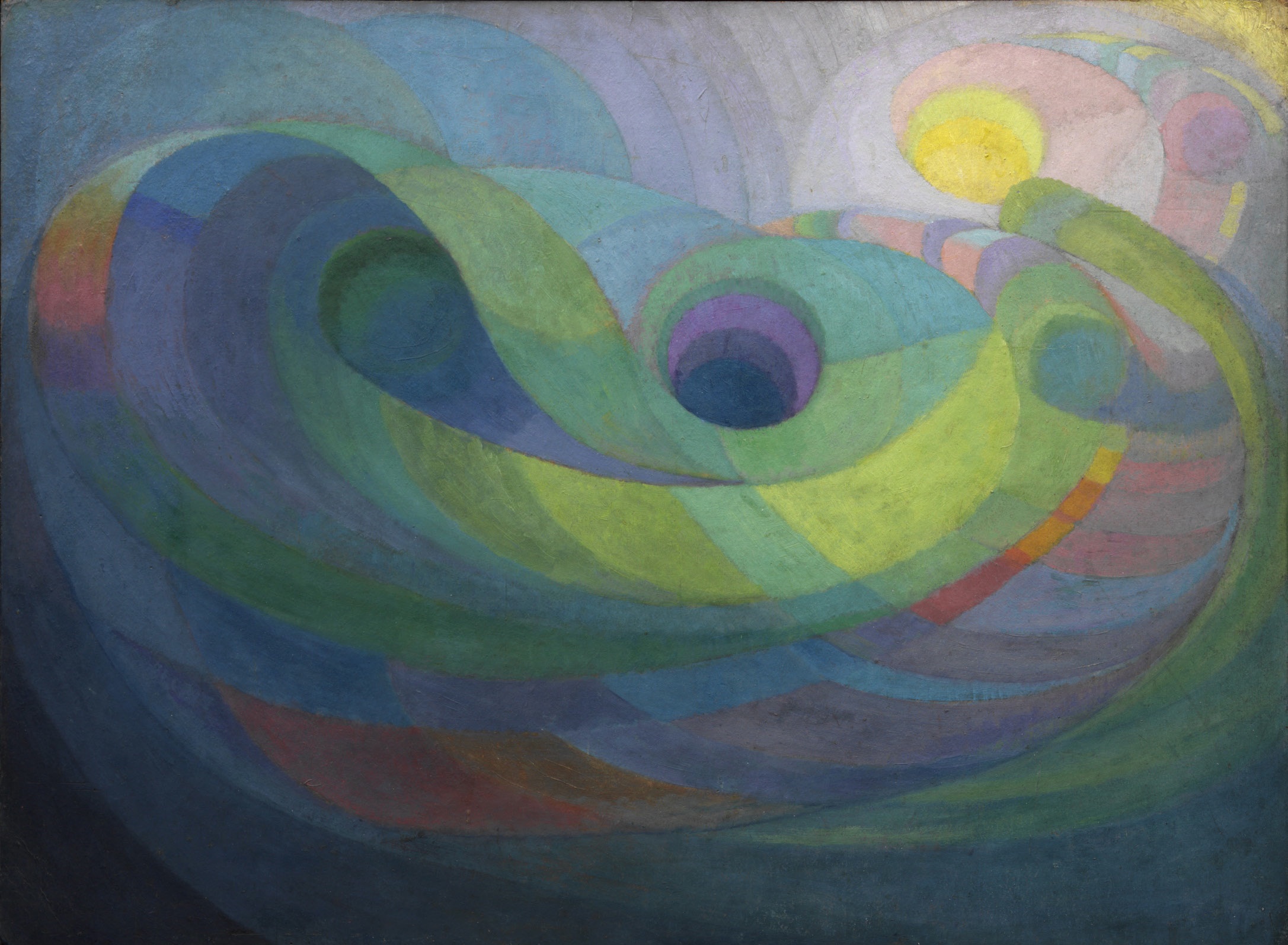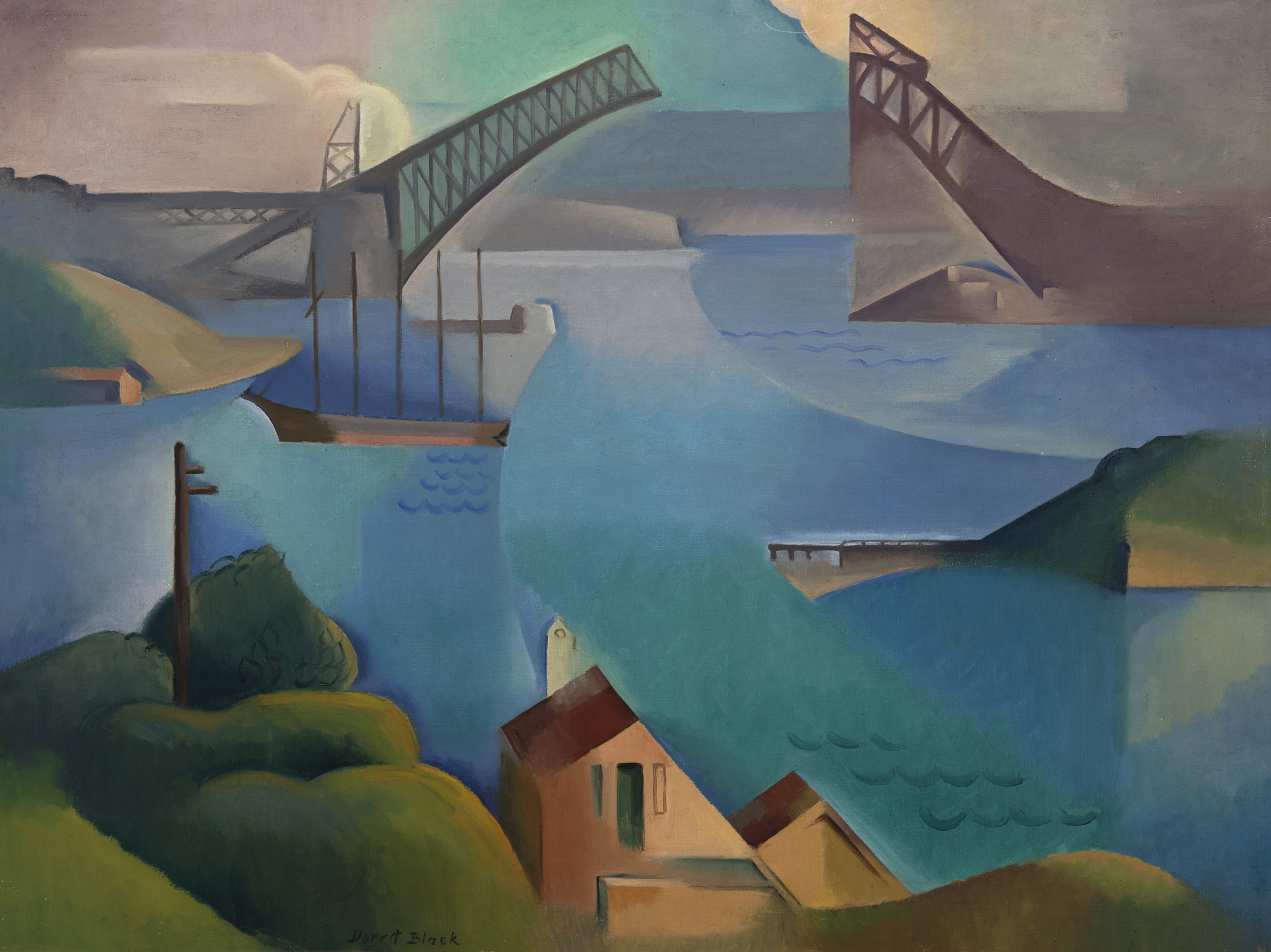exhibition review: ‘sydney moderns’

Roy de Maistre,
‘Rhythmic composition in yellow green minor’,
1919, oil on paperboard,
85.3 x 115.3cm board; 89.2 x 119.4 x 4.4cm frame,
Art Gallery of New South Wales, Sydney,
Purchased 1960,
© Caroline de Mestre Walker,
Photographer Credit : Jenni Carter
Between the First and Second World Wars Sydney developed into the modern metropolis it is today. Nothing epitomised this transformation quite like the Sydney Harbour Bridge; the massive steel structure that took a decade to construct and, upon its opening in 1932, promised a vibrant and progressive future for Australia’s most populous city. But it wasn’t, of course, just the bridge. Radical approaches to modern art, combined with the increasing freedom of women, defined this era.
Sydney Moderns, a major survey exhibition at the Art Gallery of New South Wales, Sydney, celebrates what emerged from the city during this period. Drawing largely on the Gallery’s collection, curators Deborah Edwards and Denise Mimmocchi have put together an exhibition that spans the period between 1915 and the early 1940s, and offers a rich and varied picture of the achievements of Sydney artists who embraced Modernism.
Female artists come to the fore of Sydney Moderns. From Thea Proctor’s elegant depiction of women to the accomplished prints and paintings of Dorrit Black, women, played a leading role in advancing Modernism in Sydney. Thee curators subtly highlight this by weaving the contributions of women artists are woven through the exhibition reflecting their place – for the first time – at the centre of the Australian art world.

Dorrit Black,
‘The bridge’,
1930, oil on canvas on board, 60 x 81cm,
Art Gallery of South Australia, Adelaide
Margaret Preston led this charge. Examples of her prints and paintings that drew freely on Indigenous aesthetics reveal an early interest in non-Indigenous artists engaging with Indigenous art. While Preston’s calls for Australian artists to ‘be Aboriginal’ now seem deeply offensive and misguided, they do foreshadow the current embrace of Indigenous art, something that would have been unthinkable in the 1930s.
The most intriguing artist of the period was, however, much less vocal and much more enigmatic. Grace Cossington Smith’s 1915 painting of her sister knitting for soldiers on the front, The Sock Knitter, is considered one of the first modern paintings produced in Australia. In this humble painting she applied the principles of Post-Impressionism of Cézanne and Van Gogh. It is displayed without fanfare amidst selection of paintings produced by Cossington Smith’s contemporaries, reflecting the humility of the artist.
Colour theories were explored by a number of the Sydney Modernists. It was wonderful to see Roy de Maistre’s colour music charts and wheels on display, alongside the works he created through colour and music experiments which attempted to evoke synesthetic responses. His poetic paintings A Painted Picture of the Universe (1920-34) and Rhythmic composition in yellow green minor (1919) are highlights of the show. The works he and Roland Wakelin produced for their 1919 Colour in Art exhibition reveal a very different response to Modernism; one that ignored the realities of modern life and instead focused on the senses.
The thematic focus enriches Sydney Moderns. Works are arranged by theme, not artist. While paintings by Preston, Cossington Smith and De Maistre feature heavily in the exhibition, they are scattered throughout the large exhibition space. This allows for the development and changes of directions by the artists to emerge in the context of their contemporaries.
Photographs are displayed throughout the exhibition. Images by the pictorialist photographer Harold Cazneaux, among others, present a sentimental view of life in Sydney between the wars; from the surrounding bays to carnivals and city life. By including photography alongside painting, the curators demonstrate parallel developments in different mediums, though the focus is heavily on painting, with photography, printmaking, sculpture and design making brief appearances
An exception to this focus is the recreation of an interior featured in the influential Home magazine. Drawing on a photograph and colour sketch, the curators brought to life a full-sized interior designed by Hera Roberts for an exhibition at Burdekin House (which was a popular spot for artists and designers to exhibit their works). With its streamline style modern design elements, the recreated interior presents a vision of idealised modern living that the fashionable elite would have aspired to. The presentation of this space – a square located in a gallery which visitors walk around and peer into from three of the four sides – is a credit to the exhibition designers.
The strength of the Sydney Moderns lies in the combination of artworks and ephemera, such as the copies of Home magazine and original exhibition catalogues displayed in showcases. The cluster hang is another strength, with a number of the smaller works to be hung close by works produced in a similar vein. This allowed them to be observed without the obtrusion of wall labels which were discreetly displayed to the far left, allowing an intimate encounter for the viewer.
Sydney Moderns is an engaging, rich and beautifully presented exhibition. While the works and artists are familiar to art lovers, they have never been brought together in this way to tell the story of Modernism in Sydney.
Sydney Moderns is showing at the Art Gallery of New South Wales until October 7. See the Gallery’s website for ticket prices and additional information.

